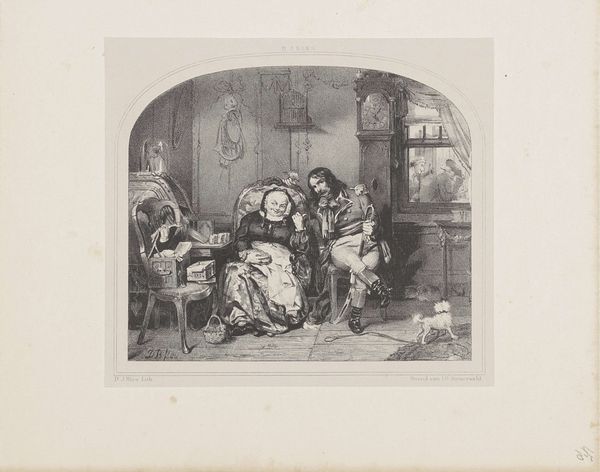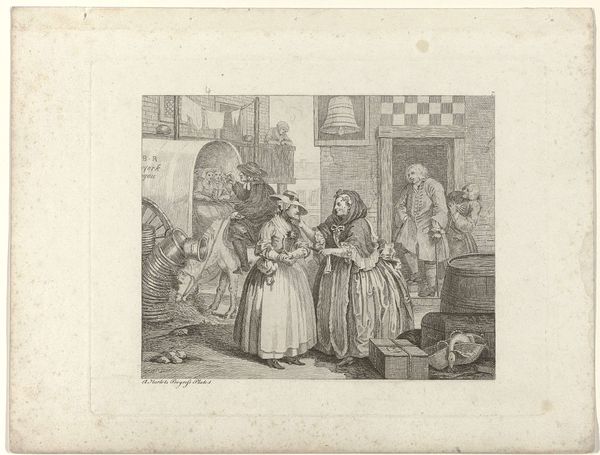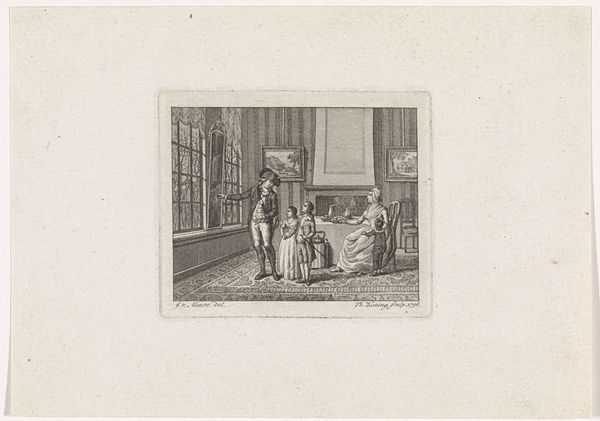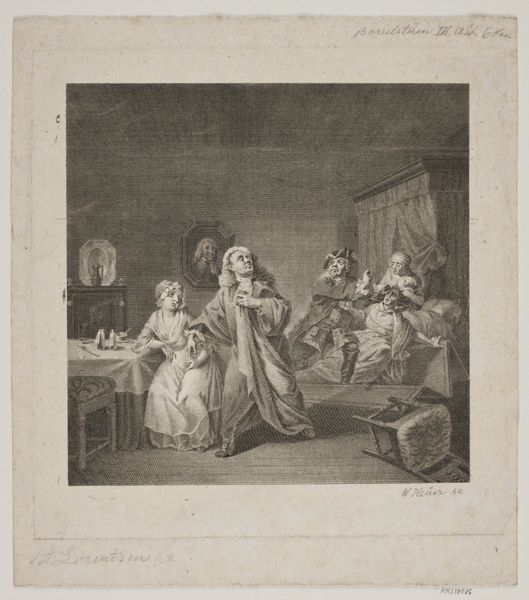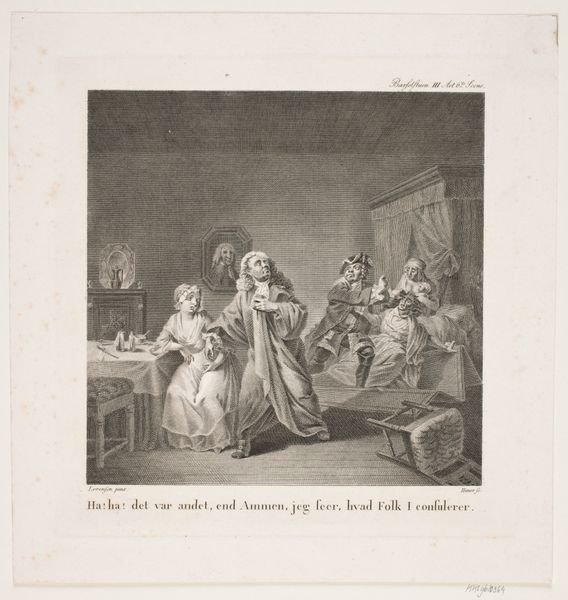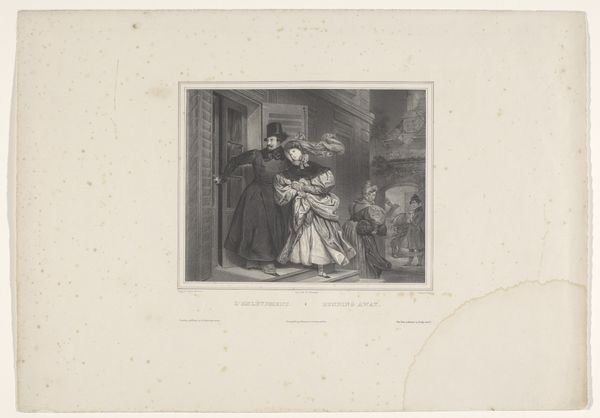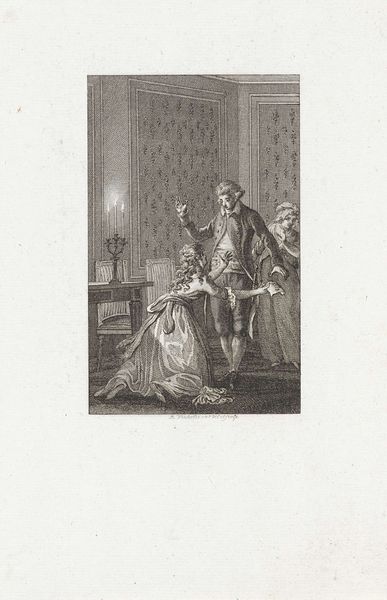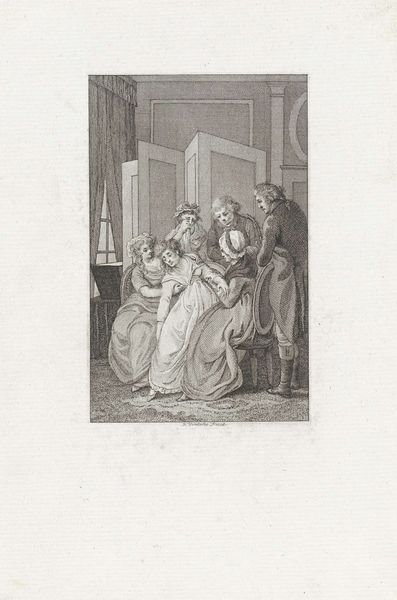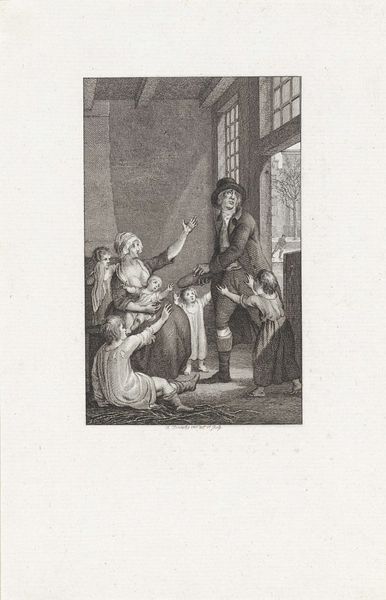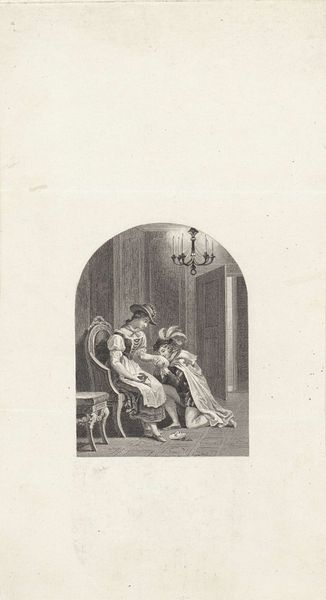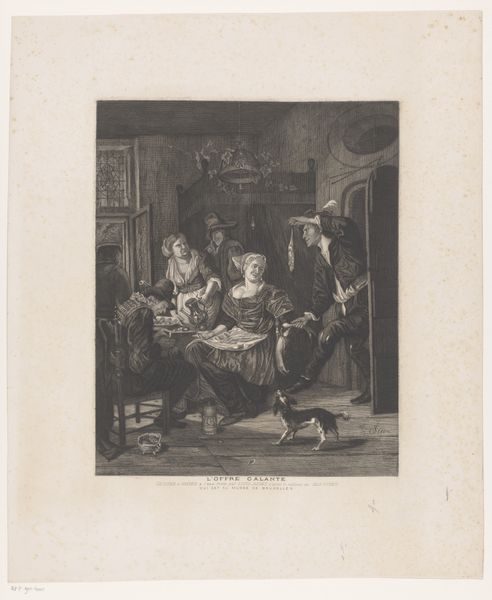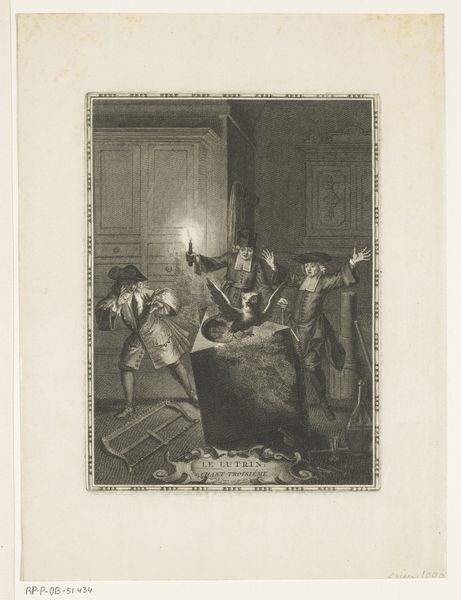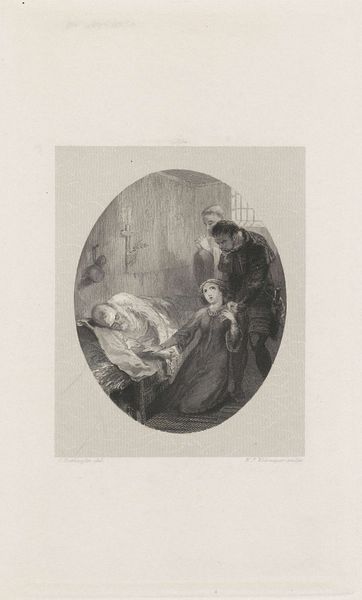
print, etching
#
portrait
#
narrative-art
# print
#
etching
#
genre-painting
#
monochrome
Dimensions: height 116 mm, width 175 mm
Copyright: Rijks Museum: Open Domain
Editor: Here we have Willem Frederik Wehmeyer’s 1854 etching, “Man en vrouw bij een wieg,” or "Man and Woman by a Cradle." It’s a monochromatic scene depicting a couple indoors, seemingly focused on something related to the woven basket and cradle. What strikes me most is the emphasis on domestic labor – the sewing, the potential baby care, the suggestion of simple household objects. How do you interpret this work? Curator: The etching method itself is crucial. Notice the intricate network of lines, born of labor. This wasn't a spontaneous act of artistic expression; it demanded meticulous planning and skilled execution. We can’t ignore that process. Consider the paper, too: its very substance signals consumption, production, distribution. In whose hands did this print end up? How was it valued as a commodity? Was it purely aesthetic or something more? Editor: So, you’re saying the act of creating the print and its existence as a manufactured object shapes its meaning more than the narrative within? Curator: Exactly. The image depicts domesticity, yes, but the work _is_ domesticity, in a way. The man is mending, and we are presented with objects representing that effort, made and placed in this material world. How were such prints consumed, what needs did they fulfill within the home or as decorations on walls? The very creation of this object required labor to sustain a culture invested in domestic pursuits. How are gender roles and class structures supported through these objects? Editor: I never thought about it like that. The materiality really brings a whole new layer of understanding. I always thought prints were ‘lesser’ forms, but I see how the labor and production are essential to its purpose, perhaps challenging the division between fine art and craft. Curator: Precisely! Seeing the artistic and commercial value inherent in the production helps uncover art's function within a social context.
Comments
No comments
Be the first to comment and join the conversation on the ultimate creative platform.
